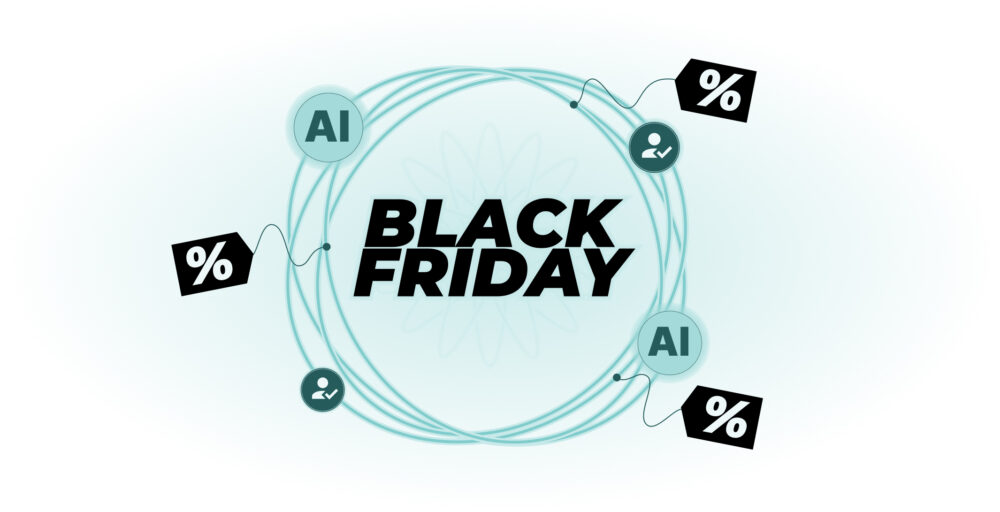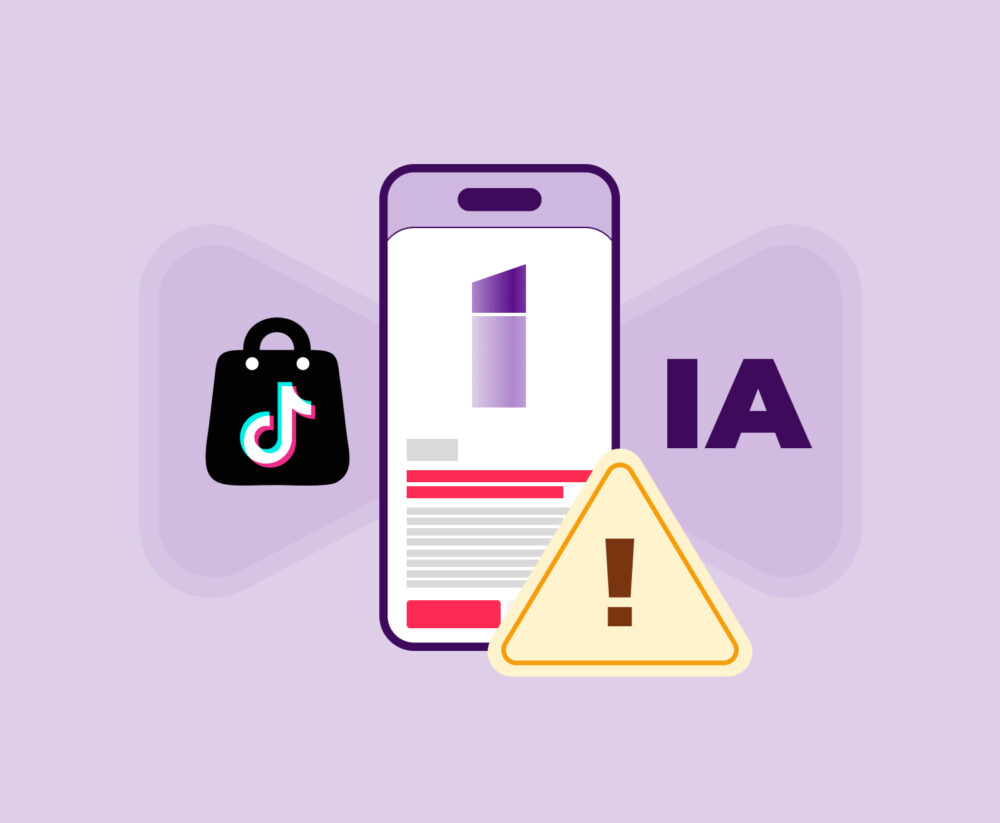Black Friday 2025: How Generative AI is Transforming Discount Strategies in Retail
Every last Friday of November, the same ritual repeats itself: shop windows packed with red signs, discounts promising to be 70% off, endless queues, and a fierce battle to offer the lowest price. For years, Black Friday has operated on a simple premise: whoever discounts the most, sells the most. Shops compete to shout the loudest about their offers, flooding consumers with mass promotions that, in theory, benefit everyone equally.
However, Black Friday 2024 highlighted a paradigm shift: AI and chatbots generated over 14 billion dollars in online sales worldwide. As we can see, the universal discount strategy is beginning to show its cracks. Margins are eroding, customers compare prices in seconds on their smartphones, and, paradoxically, the saturation of offers is breeding mistrust. The competitive advantage no longer lies in discounting more than the competition, but in discounting more intelligently. And this is where Generative AI comes in. As highlighted by estorebrands, in 2024, retailers who leveraged Generative AI in their strategies achieved conversion rates 9% higher than those who did not.
This technology represents a quantum leap from traditional artificial intelligence. While classic analytical systems are limited to processing historical information and detecting patterns, Generative AI takes a step forward: it creates new content. It generates unique offers, writes personalised communications, and designs pricing strategies adapted to each individual customer, all in real time. We are talking about systems capable of understanding each shopper’s context and building, on the fly, the exact value proposition that will maximise conversion without destroying profit margins.
The Role of Generative AI in Personalisation and Creativity
Generative AI’s ability to create original content is opening up a range of possibilities that until recently seemed like science fiction. Its application goes far beyond simple automation, allowing retailers to connect with their customers on an unprecedented level of personalisation.
One of the most direct uses is the creation of content at scale. Imagine receiving an email for Black Friday whose subject line not only includes your name, but also references that product you viewed 3 times last week. The product description on the website could adapt dynamically to highlight the features that interest you most, based on your browsing history. Social media ads would no longer be generic, instead becoming visual and textual recommendations that seem tailor-made for you. All this content, from the text on a banner to the script for a short video, can be generated by generative AI to resonate with each individual during Black Friday.
Some pioneering retailers are already applying these principles. For example, fashion e-commerce platforms use AI to analyse a customer’s style and generate complete, personalised “looks”. If a user often buys minimalist-style clothing, the AI can create a section on the homepage titled “Your Black Friday essentials”, populated with products that perfectly match their preferences and showing how to style them. Amazon, for its part, has implemented generative models that create variations of its product pages based on the user’s browsing history, modifying everything from the order in which features appear to the images that are shown first.
This technology also drives truly innovative shopping experiences. Virtual shopping assistants can hold fluid conversations, understanding the customer’s context and needs to recommend the ideal product.
The Pillars of the New Black Friday Strategy
The traditional approach of fixed discounts is being surpassed by three strategic pillars that generative AI makes possible, transforming the way retailers plan and execute their campaigns.
1. Hyper-personalised dynamic pricing
Dynamic pricing is not new. Airlines and hotels have been adjusting their rates according to demand for decades. However, Generative AI introduces an additional dimension: individual personalisation.
The traditional system modifies prices based on aggregate variables such as stock levels or general demand. Generative AI, on the other hand, can calculate a specific discount for each user. It analyses their purchase history, price sensitivity (how many times they have viewed a product before buying it, whether they usually wait for the sales), their potential value as a long-term customer, and their probability of conversion at different discount levels.
Let’s imagine two customers interested in the same television. The first is a regular, loyal customer of the brand with a high lifetime value. The second is a bargain hunter who has never bought from the brand before and is probably comparing prices on multiple sites. AI can offer the first customer a 12% discount with free delivery, knowing that her loyalty doesn’t require an aggressive price cut. For the second, it presents a 20% discount with one condition: she must complete the purchase within the next two hours. The goal is to convert without unnecessarily giving away margin.
2. Creating bundles and offers “On-the-fly”
One of the most powerful applications of Generative AI is its ability to build product bundles in real time. The system observes what a customer has in their basket and, in milliseconds, generates a complementary offer that is irresistible.
Suppose a user adds a DSLR camera to her basket. Generative AI doesn’t just suggest generic accessories. It analyses what accessories other buyers of that camera usually purchase, reviews the margin on each complementary product, considers the total price of the basket, and builds a specific proposal: “Complete your photography kit: add a 128GB memory card, a professional tripod, and a carrying case for an additional 30% off the complete bundle“.
The key is that this offer is generated exclusively for this customer, at this moment. Another user with the same camera in her basket but a different purchasing profile might receive a different bundle, perhaps one focused on additional filters and lenses if her history indicates an interest in advanced photography.
Predictive margin optimisation
The real challenge of Black Friday has always been striking the right balance: discounting enough to drive sales, but without destroying profitability. Perhaps the most strategic pillar is the AI’s ability to act as a large-scale business simulator. Before Black Friday begins, generative AI models can run thousands, or even millions, of discount scenario simulations.
What happens if we offer a 15% discount on laptops for the first 24 hours? What if we increase it to 25% but only for customers who abandoned their basket in the last week? How will offering free delivery versus a direct 10% discount affect the total margin?
The AI runs these simulations considering complex variables: demand elasticity by product category, historical customer behaviour, stock forecasting, logistical costs, and competitor pricing. The result is a much more sophisticated discount strategy than the typical “everything 50% off”. It allows businesses to identify which products should be aggressively discounted to generate traffic (so-called loss leaders), which can maintain higher margins because they have less competition, and which customer segments will respond best to non-monetary incentives like early access or free express delivery.
Understanding the Engine: How Promotions Work Thanks to Real-Time Data and Generative AI
To understand how Generative AI transforms Black Friday promotions, we need to break the process down into two fundamental stages.
Step 1: Real-time data capture
It all starts with the massive collection of information. In milliseconds, the system absorbs 3 categories of data:
- Behavioural data: Every user interaction leaves a digital footprint. The system records which products they examine, how long they stay on each page, which reviews they read, which items they add to their basket, and which they later remove. It also detects patterns: whether the user tends to browse at night or if they have previous abandoned baskets.
- Contextual data: The user’s geographical location provides valuable information, from weather factors to local events, as does the time of day they are browsing. The device also matters: a user browsing on their mobile during their tube journey behaves differently to someone researching on a computer at home.
- Market data: The system constantly monitors the competition. At what price are they offering similar products? Do they have stock available? It also analyses trends on social media: which products are going viral, which features consumers value most in their comments, and what complaints are emerging about competitors’ products.
Step 2: The generative brain
This is where the magic happens. The data on its own is inert; its value emerges when the AI transforms it into actions.
- Scenario simulation: The generative model forms hypotheses. For a customer who has visited the page for a pair of trainers four times, who abandoned their basket two days ago when the price was €89, whose history shows impulse buys when discounts are over 20%, and who has just searched Google for “best running shoes 2025”, the system asks itself: Which offer will maximise conversion? A straight 25% discount? An 18% discount plus free delivery? Access to a higher-end model with only a 15% discount?
- Offer generation: Based on the simulations, the AI creates the optimal response. It can generate a personalised discount code, modify the banner on the website to show those exact trainers with the reduced price, write the text for an email (“Mario, your favourite trainers with a 20% discount, today only“), or even trigger a push notification on their mobile.
Risks and Limitations
Despite its enormous potential, implementing generative AI in pricing and promotion strategies is not without its risks. Over-personalisation can feel invasive to the customer, creating a sense of being watched that can be counterproductive. The line between a useful offer and an invasion of privacy is a thin one.
Poorly calibrated dynamic pricing can cause a reputational crisis. If a loyal customer discovers that a new user is being offered a significantly better price for the same product, the perception of unfairness can irreparably damage trust in the brand. Furthermore, there are regulatory issues related to data privacy (such as GDPR in Europe) and price discrimination that must be managed with extreme care.
Therefore, it is essential to establish clear “safety barriers” (guardrails). Human supervision is needed to define the limits within which the AI can operate, as well as constant trials and A/B testing to ensure that automated strategies are generating positive results for both the business and the customer experience.
Key Lessons for Integrating Generative AI into Retail for Black Friday 2025
The incorporation of generative AI into discount strategies invites retailers to review how they make decisions and build value in an increasingly competitive promotional environment. Technology does not act as a shortcut, but as a tool that expands human capacity to interpret market signals and respond with precision.
The challenge for the coming years will be to integrate these systems maturely: establishing clear limits, reinforcing data quality, and defining what level of automation is appropriate for each business. Retailers who approach this adoption judiciously will strengthen their ability to anticipate demand, better manage their margins, and design more coherent customer experiences.
In a scenario like Black Friday, where every decision immediately affects profitability, having well-governed generative models can be the difference between improvising and acting with intent. The potential is there; the impact will depend on how it is implemented.









